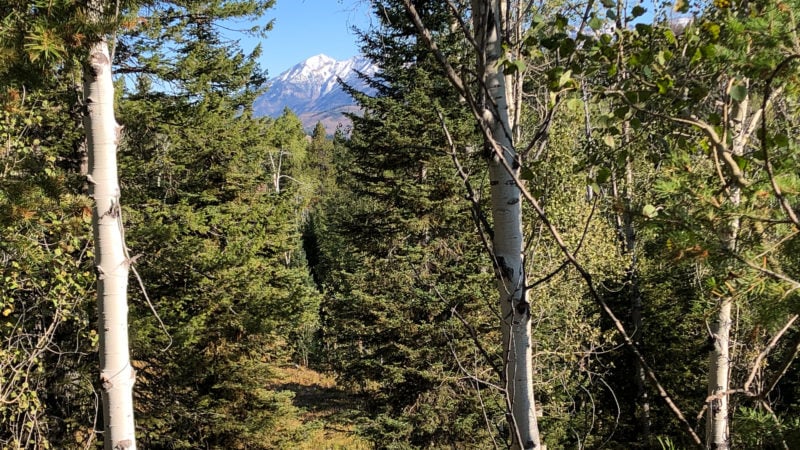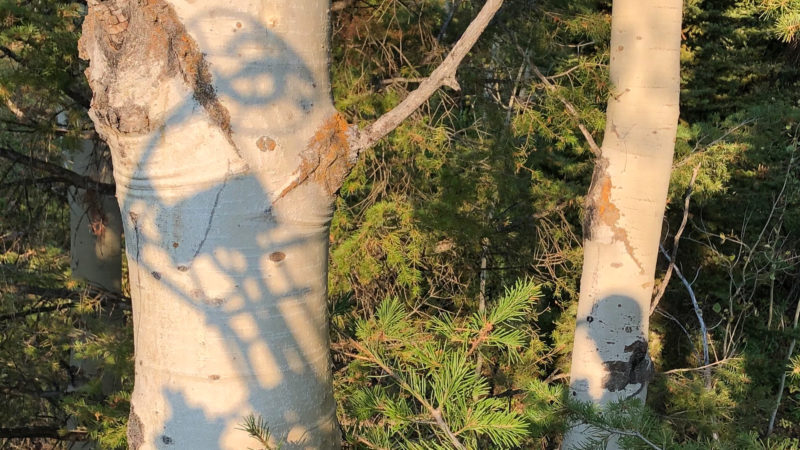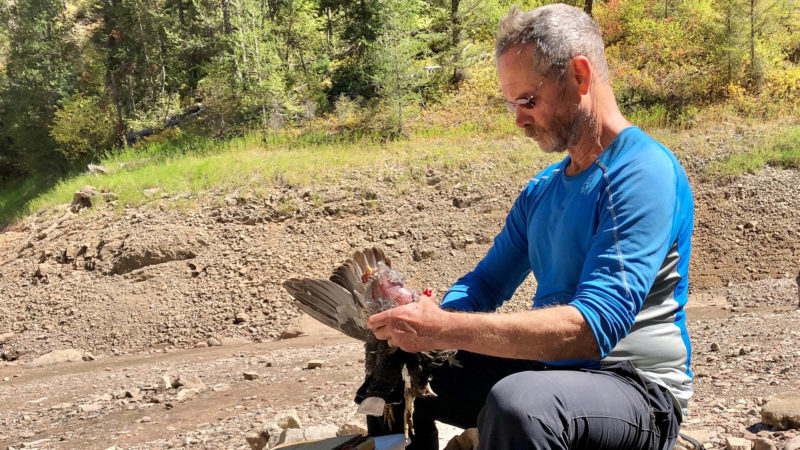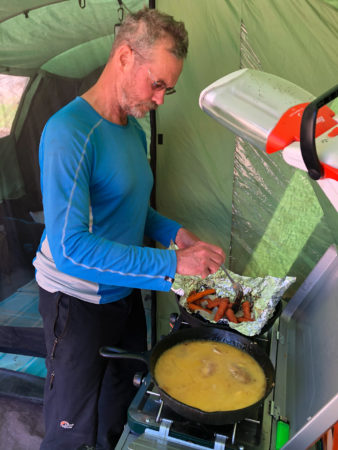Lewis and Clark had their famous voyage of discovery, but I’m content with more modest findings one week into my annual trip to bowhunt elk in Idaho’s Targhee-Caribou National Forest.
I’ve found, for example, that few things taste better than freshly killed brown trout and dusky grouse that your hunting partners caught and cooked. Those friends — former Madison, Wisconsin, classmates Mike Foy and Duffy Brungardt — signed on too late for this year’s expedition to get a deer or elk license, but so far they’ve secured more food from the surrounding land and waters than I have.
On their first fishing venture from camp, Foy caught and kept an 18-inch brown on a blue/silver Countdown Rapala. Brungardt, being a serious flyfishing angler, conducts a stomach-contents inventory on every trout that dies for his dinners. What he found in the belly of Foy’s trout couldn’t have pleased him more.

Rushing into the tent, hand extended as if showing gold nuggets sparkling in gravel, Brungardt recited the roster: “Look at that! Lady bugs, grasshoppers, flying ants, and a couple of weird bees. The trout are feeding on the surface! I wasn’t expecting that.”
He slid Foy’s trout into the cooler after deciding we needed at least two trout of that size to feed our group, even if Foy donated some whole-grain rice and Brungardt a can of green beans.
The next day Brungardt beat the water’s surface with a hopper fly and soon landed a 20-inch trout. Just as he was about to pith its brain with the stringer’s metal tip, he studied the fish more closely. So eager were Foy and Brungardt to add to the camp’s larder that they initially overlooked the fish’s smaller dots and a subtle red slash on its throat.
“Hey!” Brungardt said. “It’s a cutthroat trout! Catch-and-release only.” With that, he stayed the fat fish’s execution and returned it to the water.
Brungardt, an Idaho resident for three decades, defended his initial misidentification, noting that Yellowstone cutthroats have a darker olive cast than other “cutties.” And besides, he reminded us, he was hungry.
Still, the cutthroat confirmed that trout were hitting surface prey, rekindling Brungardt’s enthusiasm. Sometime later a 17-inch brown trout snatched his hopper fly, and then fought valiantly while defending every foot of water between itself and the landing net.

Brungardt pithed the trout, later gutted in camp, and again presented its stomach contents for our admiration before sliding it alongside Foy’s cached trout from the day before. Brungardt pan-fried the trout for dinner, making me feel spoiled after eating little except Mountain House meals the previous 14 years of Idaho elk camps.
Three days later Foy and Brungardt took their shotguns for a walk, hoping to jump dusky grouse, a Western bird everyone called “blue grouse” until biologists scolded and shamed everyone into complying with their name preference. Even though Foy and Brungardt hunted both blues and duskies, they saw neither that day.
Undeterred, Brungardt hunted grouse again the next day, first through the valley behind camp, and then up the ridge 1,000 feet above. Just when he became convinced the forest cover was too thick to hold duskies, one of the phantoms burst into the air and perched in the lower branches of a Douglas fir. A burst of pellets from Brungardt’s 20-gauge shotgun claimed our elk camp’s first grouse.
Seconds later a second dusky made the same mistake, and another shotgun blast doubled Brungardt’s bag.

We pause here to note it’s much easier for one man to haul two undressed dusky grouse over 1½ miles to camp than it is for three men to haul the meat and hide of one elk so far. Foy documented this fact by photographing Brungardt happily holding up both grouse after entering camp looking as fresh and unfatigued as when he departed in late morning.
Brungardt cooked the delicate birds in mushroom soup for lunch the next day, complete with carrots, onions, rice and coleslaw side dishes. No elk camps anywhere have eaten better.
Meanwhile, 1½ miles away on the opposite ridgeline, I saw no elk on Day 1, three elk on Day 2, another three elk on Day 3, and no elk on Day 4.
I heard the first elk trio long before seeing them early on Labor Day as they charged my way through the thick ridgetop forest. A mature cow led the group, followed by its lone calf and a young 4-point bull. I called loudly at the group as they passed at 25 yards, hoping they’d stop within arrow range and offer a shot, but they didn’t break stride.
Just when I assumed they were spooked and would run forever, they broke into a stot, bouncing pogo-stick style on all four legs in a subtle imitation of mule deer. After pausing 90 yards away to survey the meadow, the cow led them back in the direction they’d come from.

The next day I heard a similar ruckus to the north an hour after dawn. This time a mature cow, a yearling cow and a calf appeared, and again I called loudly as they passed 35 yards away. The bigger cow slowed the group, and then they stotted in unison until stopping 100 yards away. When they resumed their run, the older cow continually nipped at the yearling’s ears, her actions looking more good-natured than hostile.
My untrained eyes suggested both elk groups weren’t fleeing anything. Judging by the way they sometimes ran in large circles, taking turns dogging and imitating each other’s moves, I described it to Foy and Brungardt as “screwing around.”
Just to make sure, I emailed a description of what I’d seen to Calgary’s renowned zoologist Valerius Geist, and asked his thoughts about stotting elk. Professor Geist responded: “When animals are in good shape and there is lots of food, they tend to frolic, which is what I think you saw.”
Meanwhile, the elk’s rut is nearing, and I assume they’ll soon get serious about chasing and mating. As my 2020 bowhunt enters its second week, I’m hoping a cow or bull elk stops within bow range.
And if my arrow flies true, I’ll do my part for fine dining by preparing elk heart for our camp’s next dinner.

 By
By 



